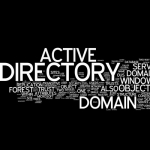SolutionOne Blog
Why Small Businesses Need to Properly Manage Active Directory
The purpose of a solid business network is to iron out the chaos of running multiple computers whose users need to access and share files and documents. With sharing comes the need to restrict some users from certain files, all while protecting your IT infrastructure from the inside and out.
If you are running anything bigger than a one-man show, centralizing both your files and network permissions to a server is very important. Not only does it provide a central repository for all those day-to-day files so you don't need to rely on digging around multiple computers or email accounts to find the proposal written three weeks ago, but it defines who can access the network and dishes out administrative security.
The more users you have, the more valuable it is; but server administration and management needs to happen early, even if you only have a couple users, to prevent things from getting sloppy. This is where Active Directory comes in.
Active Directory is a service included on nearly all Windows Server operating systems. If you have multiple servers, the one that handles Active Directory is called the domain controller (we promise there won't be a quiz afterwards). Essentially, when administrated correctly, when a user logs onto a workstation on your network, the workstation communicates back and forth with your domain controller to verify the user's password and then dish out specific rights and privileges to the user.
For example, when SolutionOne manages your network, we often need to log in with full administrative access to perform system maintenance tasks or troubleshoot issues. This gives us access to settings and abilities that you wouldn't want to give to a normal user, such as managing security privileges and installing new hardware.
Active Directory manages your domain, which consists of users and workstations and many security protocols and settings concerning them. When permissions and rights are managed properly, it's easy to ensure files can be accessed by those who need them and inaccessible to those who do not. Users can be put into specific group, such as Sales, Marketing, HR, and Service, and those groups can have different policies.
A lot of consideration and strategy goes into proper Active Directory management, but when things are properly configured management overhead is considerably less for administrators and keeps things simple and secure for employees while tending to your organization's unique needs. If you need help planning, implementing, and managing your network for the greatest security and lowest overhead, contact SolutionOne at (214) 299-8555 and meet with us about your needs and goals.

Comments